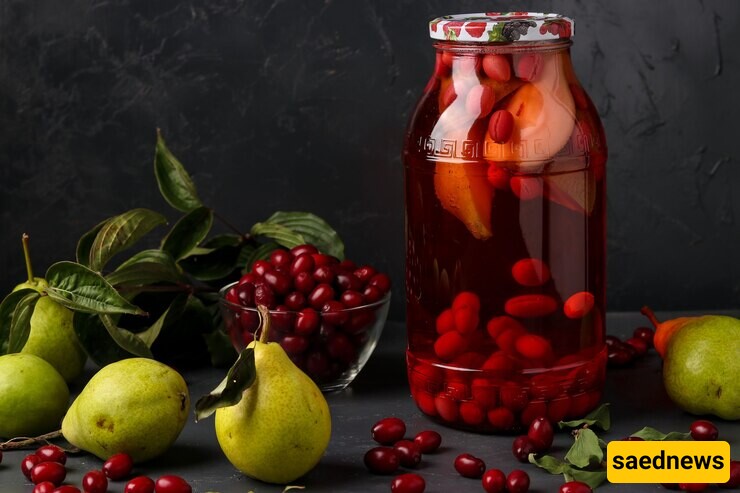SAEDNEWS: Vinegar can be made from any substance that contains enough sugar to ferment into natural acetic acid.

It is produced by the oxidation of ethanol derived from the fermentation of fruit and grain sugars, typically containing 3 to 5 percent acetic acid. Quince vinegar, made from the quince fruit, is prepared in autumn and is used as a condiment in salads and various pickles, such as eggplant pickles. Other quince products include quince jam with honey.

Many may think that making vinegar at home is difficult and time-consuming, but it is actually quite easy and requires no special effort. The only requirement is patience, as it takes about a year for the vinegar to mature and achieve high quality. Homemade vinegar is not only high-quality but also natural. Additionally, making fruit vinegar helps prevent waste by using fruits that are no longer suitable for consumption.
Select a Container: You can use a plastic barrel or a ceramic jar for making vinegar. Fresh fruits are not needed; you can use overripe, bruised, or old fruits, but avoid moldy ones. Leftover jams that you no longer wish to consume can also be used.
Prepare the Container: Place your container in a suitable location. Start adding fruits that you do not use, such as mashed berries, cherries, pears, grapes, apples, etc. You can begin this process at any time, but it's best to start in a specific season as it takes a year for the vinegar to be ready. For example, you can start in May and gradually add fruits throughout the year.
Prepare the Vinegar Base: Pour some apple cider vinegar into a suitable container, heat it, and add a bundle of tarragon tied with a string. Let it boil for 5 to 10 minutes, then remove from heat and discard the tarragon. Pour the vinegar over the fruits in the jar.
Fill the Jar: Ensure the jar is full to prevent air from entering. If needed, add more fruits to fill it up or use a smaller jar. Seal the jar tightly and place it in a warm location. In summer, you can place it in the sun. In autumn or winter, keep it in a warm place. After a year, open the jar.
Strain the Vinegar: Select a large plastic basin and line it with a clean plastic bag. You can use bags typically used for packaging rice or sugar. Pour the contents of the jar into the bag to separate the vinegar from the pulp. You don't need to press the bag too much; the natural separation is sufficient. Discard the bag with the pulp.
Store the Vinegar: Pour the strained vinegar into suitable containers, such as jars, soda bottles, glass containers, or any other vessels, filling them to the brim. Seal the containers and let them sit for 2 to 3 days. Then, strain the vinegar again using a finer sieve or clean mesh cloth. Your natural homemade vinegar is ready for use in homemade pickles, dishes, sauces, and salad dressings.
Quince vinegar has antibiotic properties and contains biological amino acids.
It improves metabolism, aids in better digestion by increasing saliva secretion, and prevents tooth decay.
Quince vinegar helps prevent obesity and is beneficial in anti-diabetic diets.
It cleanses the spleen and is beneficial for inflamed and phlegm-filled stomachs; it also relieves gastrointestinal blockages.
People with weak nerves should avoid consuming too much vinegar unless mixed with honey or spices.
Those with stomach ulcers should avoid using it.

